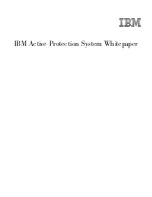
Router_IPv6_Address for IPv6 addresses. Only one node-based RSVP-TE hello session
can be established for each instance of an IGP adjacency with a peer.
When a router receives a hello message where the destination address is set to the
receiving router’s local node ID, the router verifies that the node ID is the ID that the IGP
advertises. This router must then use its local node ID as the source address when it
replies to the sending router.
Node-based hellos are an attractive alternative to link-based hellos for graceful restart
when you use bidirectional forwarding detection (BFD) for link monitoring and you have
configured node-based hellos on all RSVP-TE peers.
Link-based RSVP-TE hellos are used for monitoring RSVP-TE adjacencies with neighboring
routers and for providing RSVP-TE graceful restart. However, the BFD protocol is more
effective at monitoring RSVP-TE adjacencies than are link-based hellos.
Link-based RSVP-TE hellos for graceful restart are more resource-intensive option than
node-based RSVP-TE hellos when your configuration has several interfaces enabled
with MPLS RSVP-TE and carrying RSVP-TE data traffic. Link-based hellos generate a
volume of network traffic and processing overhead that is directly proportional to the
number of interfaces that are carrying active RSVP-TE tunnels.
Node-based hellos require less messaging and processing overhead in these
circumstances. Node hellos require only a single hello session between the two node IDs,
compared to link-based hellos that have hello sessions between all interface pairs. Less
traffic and overhead result in a lesser impact on scaling.
Node-based hellos can therefore be advantageous even when you are interoperating
with routers that are running JunosE Software or Junos OS, if you are using BFD to monitor
your RSVP-TE links. If you are not using BFD, then you must use link-based hellos for link
monitoring, and link-based hellos then become more practical for graceful restart.
Related Topics
Configuring RSVP-TE Hellos Based on Node IDs on page 299
•
BFD Protocol and RSVP-TE Overview
The Bidirectional Forwarding Detection (BFD) protocol uses control packets and shorter
detection time limits to more rapidly detect failures in a network. Also, because they are
adjustable, you can modify the BFD timers for more or less aggressive failure detection.
Without BFD, RSVP-TE can learn about adjacency failures by either of two methods. If
RSVP-TE hellos are configured, then hello message timeouts indicate a failure. If hellos
are not configured, then RSVP-TE learns about failures from resv and path messages.
When a BFD session exists between RSVP-TE peers, a peer that goes down is detected
quickly, enabling faster rerouting of traffic. Adjacency failure detection by means of hello
messages takes place on the order of seconds, whereas BFD fast failure detection can
take place on the order of hundreds of milliseconds.
Copyright © 2010, Juniper Networks, Inc.
266
JunosE 11.2.x BGP and MPLS Configuration Guide
Summary of Contents for JUNOSE 11.2.X BGP AND MPLS
Page 6: ...Copyright 2010 Juniper Networks Inc vi...
Page 8: ...Copyright 2010 Juniper Networks Inc viii JunosE 11 2 x BGP and MPLS Configuration Guide...
Page 38: ...Copyright 2010 Juniper Networks Inc 2 JunosE 11 2 x BGP and MPLS Configuration Guide...
Page 192: ...Copyright 2010 Juniper Networks Inc 156 JunosE 11 2 x BGP and MPLS Configuration Guide...
Page 242: ...Copyright 2010 Juniper Networks Inc 206 JunosE 11 2 x BGP and MPLS Configuration Guide...
Page 244: ...Copyright 2010 Juniper Networks Inc 208 JunosE 11 2 x BGP and MPLS Configuration Guide...
Page 310: ...Copyright 2010 Juniper Networks Inc 274 JunosE 11 2 x BGP and MPLS Configuration Guide...
Page 356: ...Copyright 2010 Juniper Networks Inc 320 JunosE 11 2 x BGP and MPLS Configuration Guide...
Page 418: ...Copyright 2010 Juniper Networks Inc 382 JunosE 11 2 x BGP and MPLS Configuration Guide...
Page 524: ...Copyright 2010 Juniper Networks Inc 488 JunosE 11 2 x BGP and MPLS Configuration Guide...
Page 544: ...Copyright 2010 Juniper Networks Inc 508 JunosE 11 2 x BGP and MPLS Configuration Guide...
Page 608: ...Copyright 2010 Juniper Networks Inc 572 JunosE 11 2 x BGP and MPLS Configuration Guide...
Page 672: ...Copyright 2010 Juniper Networks Inc 636 JunosE 11 2 x BGP and MPLS Configuration Guide...
Page 674: ...Copyright 2010 Juniper Networks Inc 638 JunosE 11 2 x BGP and MPLS Configuration Guide...
Page 716: ...Copyright 2010 Juniper Networks Inc 680 JunosE 11 2 x BGP and MPLS Configuration Guide...
Page 717: ...PART 6 Index Index on page 683 681 Copyright 2010 Juniper Networks Inc...
Page 718: ...Copyright 2010 Juniper Networks Inc 682 JunosE 11 2 x BGP and MPLS Configuration Guide...
















































